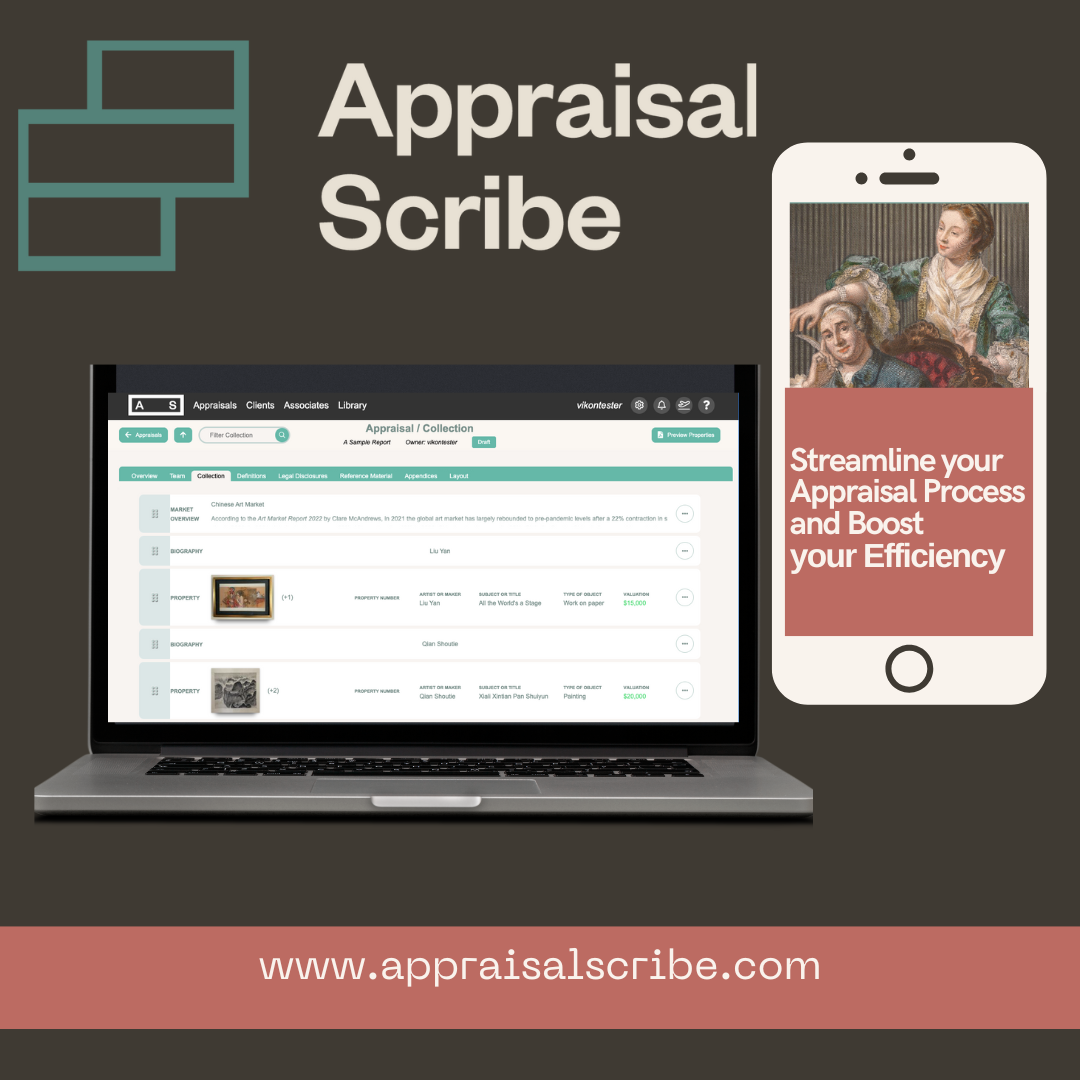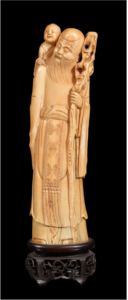Category Archives: appraisal
What’s It Worth: Valuing Ivory in an Era of Regulation
Link
What’s It Worth: Valuing Ivory in an Era of Regulations
In this helpful article, Richelle Simon, ISA, guides the appraiser and the collector through the legally complex ivory market. Valuation or advising on the possible sale of objects made of ivory and other endangered species requires research of the object’s provenance, documentation of when and where the object was acquired, and authentication. It also requires careful consideration and understanding of the numerous domestic and international regulations on the books since the 1970s. Read on for details:
Appraising in a Pandemic
Over the past month, our firm has received a number of inquiries for appraisal services and sales advisory. Like so many right now, Thompson & Martinez and the appraisal profession has had to adapt to the “new normal” of working from home. Appraisers typically prefer to do an in-person inspection of a property or collection for any given project. Occasionally if the property or collection is outside of our region, we will work with another appraiser in that region to “be our eyes” as the inspector. Now, because of shelter-in-place policies around the country, appraisers are, by and large, unable to inspect in person. However, governors of the three accreditation societies (ASA, AAA, ISA), have advised appraisers that depending on the appraisal purpose and property, inspections can be carried out “remotely” with clients providing information on their property such as artist, medium, date, dimensions, signatures, and taking high quality and detailed digital photographs. Please click on Consultation Request to begin this process.
Wishing you health in this uncertain time.
The Tax Cuts and Jobs Act of 2017, Some Things for Art Collectors to Consider
In late 2017, President Trump signed into law, the Tax Cuts and Jobs Act, which went into effect on January 1, 2018. Tax attorneys and accountants are in the process of unpacking this law, and how it affects their clients’ personal and business interests. Personal Property appraisers, those of us who value a wide range of tangible assets, including fine art, rare books, collectibles, jewelry, automobiles and yachts among many other things, also need to understand how this will affect our clients, from the perspective of estate planning, donation, gifting, inheritance and sale. As is commonly known, the 2017 tax reform bill doubles the exemptions for estate tax up to $11.2 million for individuals and $22.4 million for a couple. For the vast majority of U.S. citizens, this will eliminate the need for an appraisal for estate tax calculation.
For those whose estates have an overall value above this new federal exemption threshold, beneficiaries will still need a Fair Market Value appraisal, as of the date of death, of their personal property. For example, a painting by an artist like Jean-Michel Basquiat (1960-1988), purchased by the deceased in 1985 for $10,000 will, given the exponential growth in Basquiat’s market, be worth significantly more in 2018. This stepped-up basis is not only required for estate tax calculation but also for any possible future sale and reporting for income tax. If the painting is sold for $200,000 in 2019, the 28% capital gains tax will be based on the 2018 appraised value rather than the 1985 purchase price. The tax basis of any gifts of personal property transferred within a family, say from mother to daughter while the mother is still alive, is subject to the donor’s tax basis not the donee’s. It may be worth delaying such a gift in order to obtain the after death stepped-up in basis tax benefit.
When it comes to your art collection, these are just a few things to consider in light of the tax reform bill. And remember, the federal estate tax exemption levels are set to expire at the end of 2025, reverting back to the 2017 levels.
Some things to consider when thinking about insuring your collection
We often get inquiries from collectors about obtaining an insurance appraisal for their collection of fine art. Before hiring an appraiser, collectors need to evaluate their homeowners insurance policy and consider which works meet the threshold of value that necessitates a separate fine arts policy. Property Casualty 360 has recently posted some useful information to help collectors evaluate if a separate rider for the collection is needed. In particular, the author notes that typical homeowners policies require appraisals for collections worth over $5,000. Read on:
Large private collections generally have proper risk management in place including fine-art insurance that covers the full value of the items. But many smaller collections (those valued below $1 million) tend to be insured under a traditional homeowners policy or have no insurance at all. If these collectors face a devastating event resulting in damage, they may discover too late that their coverage is not sufficient to address their financial losses.
In simple terms, the process of insuring collections of fine art and collectibles under a traditional homeowners policy tends to be time-consuming and difficult while possibly yielding lower limits and less expansive coverage when compared to obtaining coverage with a fine art and collectible insurance policy. The comparisons below address specific differences between the two types of policies.
Appraisals – Homeowners policies generally require appraisals for collections over $5000 as part of the underwriting process. Many collectibles insurance policies do not require appraisals at the time of application.
Deductibles – Zero-dollar deductibles are the standard for collectibles insurance polices with some offering additional deductible options. Homeowners policies may offer zero-deductible policies, but it is not as common.
Limits – The limit on fine art and collectibles coverage generally ranges from $500 to $2000 for a homeowners policy without the addition of a floater or rider. Even with an added floater or rider, homeowners policies tend to limit the level of exposure. A collectibles policy may offer coverage up to $1 million or more.
Coverage – One of the most important coverage differences between a homeowners policy and collectibles policy is the valuation of covered items. Homeowners policies tend to insure for actual cash value while collectibles policies insure the full collectible value of items in the collection. This distinction alone can reflect a startling difference in potential claims payments in the event of a loss. Homeowners policies generally cover named perils only, exclude coverage for items during transit, limit coverage on items stored away from the home to as little as 10 to 15 percent, and extend coverage to newly acquired items for only 30 days. By contrast, collectibles policies typically include all risk coverage and provide coverage for items in transit, items stored away from the home (such as in an office or storage facility), and newly acquired items for up to 90 days. Some collectibles policies may offer additional coverage benefits such as discounts for monitored fire and burglar alarms or items kept in a UL-rated safe.
Claims – In today’s insurance market, filing a claim against a homeowners policy may leave an insured vulnerable to premium increases at renewal or the possibility of non-renewal. With a separate collectibles policy, claims do not affect homeowner premiums or loss history. In addition, companies that offer collectibles insurance may have claims adjusters with a high level of expertise in this area. Adjusters with this specialized knowledge are better able to determine the value of unique or rare items, which should expedite the claims process and lead to a better outcome for the insured.
A detailed comparison of the benefits and limitations of standard homeowners insurance versus collectibles insurance demonstrates that specialty coverage can be very advantageous for serious collectors.



